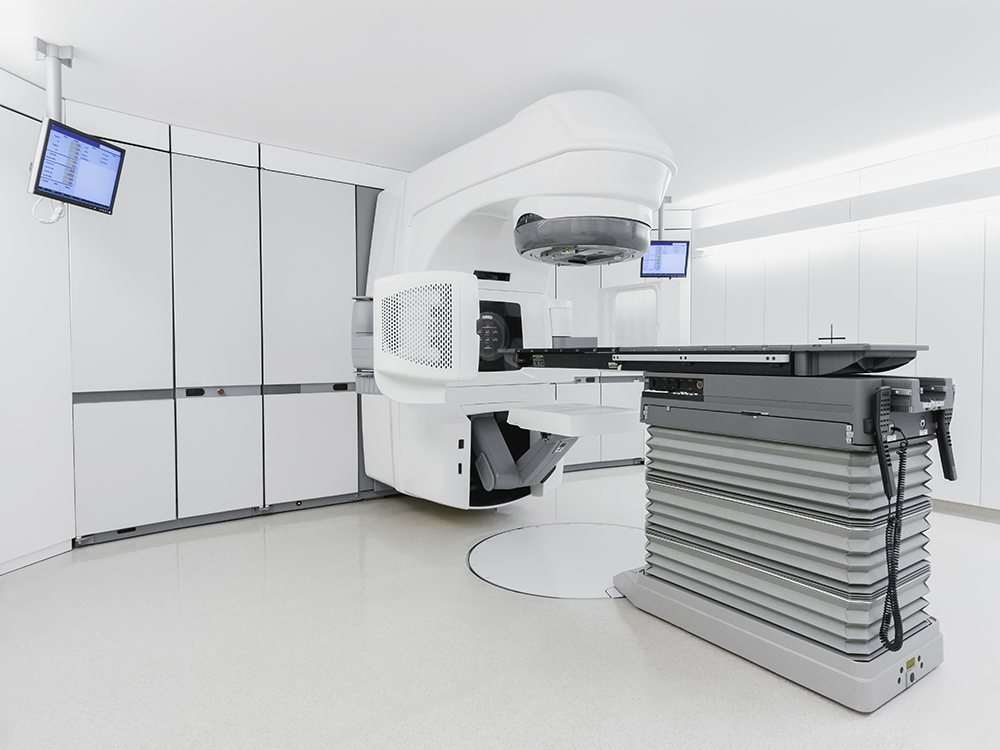Buyers Guide for Linear Accelerator Service Contracts
September 26, 2018

Below is an excerpt from Buyers Guide for Linear Accelerator Service Contracts, provided by Avante Oncology Services. Download the full version PDF here.
In today’s healthcare environment, providers are increasingly concerned about both cost and quality of capital investments, and rightly so. Service and maintenance, while unavoidable, can be expensive. How can state-of-the-art healthcare providers be sure their medical equipment is reliable and sustainable, and can produce the best possible outcomes now and in the future?
In general, manufacturer-provided (OEM) service is costlier and less responsive than ever before.1 Additionally, OEMs are quick to claim that only they can properly provide post-warranty service. In some instances, they may even bundle products and upgrades to seemingly hold you hostage to their service.
What can you do to evaluate alternatives?
What are the key issues you need to consider when selecting a service partner and how can you be sure you’re getting the best value?
Best value in service is frequently defined by reputation and response time from your service provider. But you’re not really buying service—you’re buying uptime and performance. After all, that’s how you will deliver the best patient care. You need assurance that your investment is maintained in the best condition possible and that you’re getting the best value possible.
First, let’s look at what you need to consider before you buy:
quality, sustainability and total cost of ownership (TCO) throughout the life of your equipment.
QUALITY STANDARDS:
What Healthcare Providers Need to Know
Quality outcomes depend on quality service. The International Organization for Standardization (ISO) has developed the ISO 9001 Quality Certification to help customers make informed decisions when quality is paramount. ISO 9001 is recognized the world over for its process-based approach and the commitment to continual improvement embodied in the standard. When selecting an independent service organization, choose from those that achieve this commitment to conscientious service management and have a strong customer focus and a process approach to continual improvement that rivals that of OEMs.
ISO 13485, an additional quality certification applicable specfifically to the medical device industry, focuses on key quality aspects such as product safety, corrective and preventive action, and risk management. Sometimes only associated with manufacturers, independent firms can also be found with this additional level of service accountability and documentation.
For the best assurance possible, be sure your service team is ISO 9001 and ISO 13485 certified and that they have continual internal auditing processes with regular independent audits. Note that while an OEM with ISO 13485 certification would be actively focused on quality design and manufacturing of their medical devices, an independent service provider would be primarily focused on delivering quality service and customer satisfaction for the lifetime of the equipment.
SUSTAINABILITY:
Performance for the Long Term
The medical device industry is highly complex and dynamic. Sustainable performance depends on up-to-date information and fresh technology. Before you purchase your medical device, investigate what service options are available to you and how each organization ensures proper training for service personnel. In many cases, it is no longer true that the OEM provides superior service.2 Ask how they measure customer satisfaction. Compare their Net Promoter Score (NPS)3. Many independent service providers have adopted rigorous quality management systems and formal training programs that meet or exceed OEM standards, delivering superior value with comparable uptime.
From a regulatory perspective, the OEM is ultimately responsible for safety and compliance related to machine design and labeling. They are held to the highest standard, and your service team should own that standard, as well, to ensure a total quality approach throughout the life of your equipment.
At times, throughout the lifespan of your equipment, you will need high quality, affordable replacement parts delivered quickly and safely to your door. Verify that your service team can get you the parts you need either Next Flight Out or Overnight door-to-door. Independents and OEMs can both provide high quality new and refurbished parts essential to sustain your equipment. Refurbished parts may be the best option in many cases, so ensure your service organization can test and certify refurbished parts for best value.
When buying used equipment, it’s nice to get it from the same company who will service it, establishing continuity and a seamless experience. Find independents that will sell, install and service for the entire lifecycle of your investment.
In addition to training and parts, software updates—both optional and mandatory—are an important part of your equipment lifecycle. Many medical devices use traditional, off-the-shelf software available to the general public, such as Windows, SQL, McAfee, Java and VNC. As such, these medical devices often require updates to maintain reliability and security. Sometimes, software versions can be maintained “as shipped” for the life of the machine, but if you know your options as a consumer and healthcare provider, you can make an informed decision. Check with your service provider before undertaking large-scale overhauls of your software systems to see if there are other paths toward sustainability. And remember, you are the customer. Don’t let the OEM artificially inflate the cost of upgrades.
Total Cost of Ownership (TCO)
Radiation oncology centers are under constant pressure to reduce expenses. In addition to the equipment’s purchase price, ongoing maintenance costs and software upgrades can easily get out of hand, straining your operating budget. Fortunately, you have several options—and some of them can bring significant savings over the life of your medical devices.
For the greatest degree of flexibility and control, approach Total Cost of Ownership (TCO) in three parts: purchase price, ongoing maintenance and upgrades. It may seem attractive to bundle these things into one package, but it is usually advantageous over the long run to negotiate them separately. Doing so will allow you to pay for only the equipment and service you need and take a pass on those you don’t, as well as the flexibility to make adjustments down the road as your needs change.
Warranty - Your new or pre-owned medical device should have a warranty that covers parts failures, defects in design, manufacturing or installation. Ensure the warranty duration and coverage is appropriate to your situation and your equipment. In some cases, it may be necessary to complement the warranty coverage with additional shared-risk insurance or other service contracts. Check with your service provider for details and compare prices.
Full-service contracts - The most popular option, full-service contracts shift most of the risk to your service provider by covering you in the event of a catastrophic failure. Here you will find the most flexibility and control over your equipment’s TCO.
Shared-risk contracts - Another very good option for reducing TCO, shared risk contracts cover your most basic support needs. Usually, catastrophic failures will fall under time and materials costs if they do occur.
Time and materials (T&M) - By forgoing a service contract, you can save money in the long term by assuming all the risk. This option may be more attractive when you can be confident in the equipment and have good historical performance information.
In-house maintenance - When you have a wide range of medical equipment that requires regular attention or a large number of devices, in-house maintenance is a good option. This support model has high fixed costs, which is more appropriate to larger departments with high uptime requirements. Note that in-house maintenance can be supplemented with any of the other service models for fast response coupled with the high expertise of a specialized service provider, providing you with the most complete coverage possible.
To read the full version of this buying guide, provided by Avante Oncology Services, download the PDF here.
